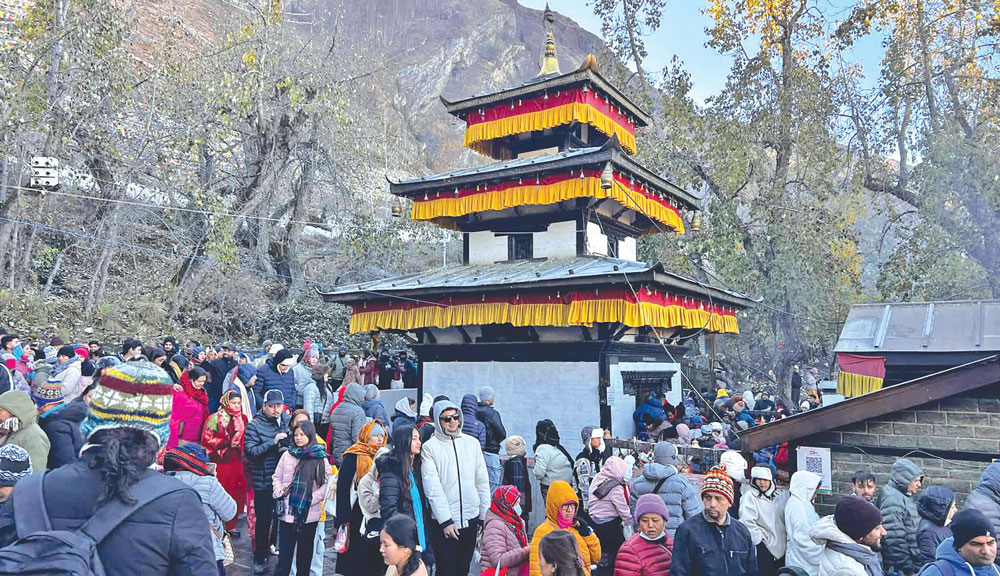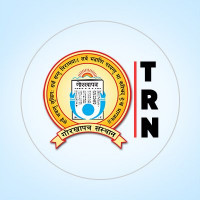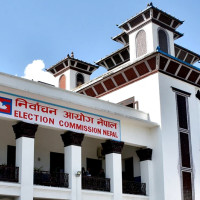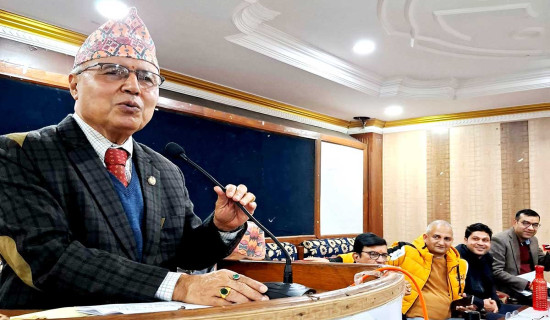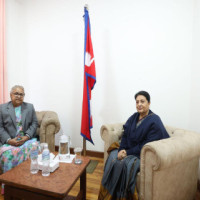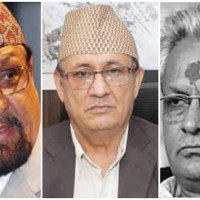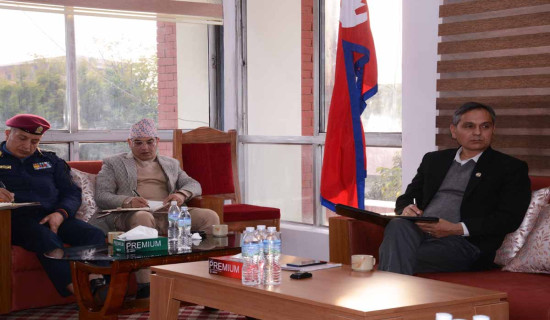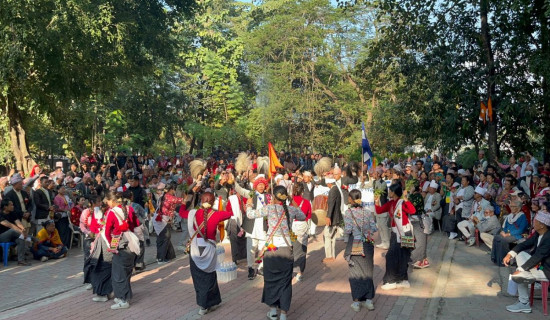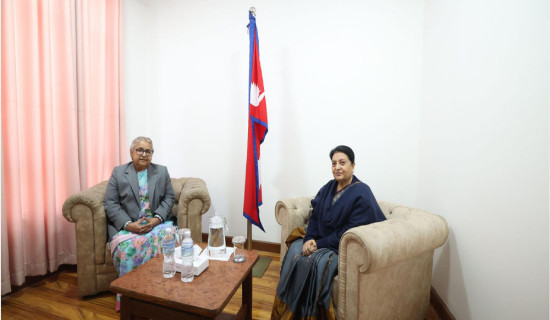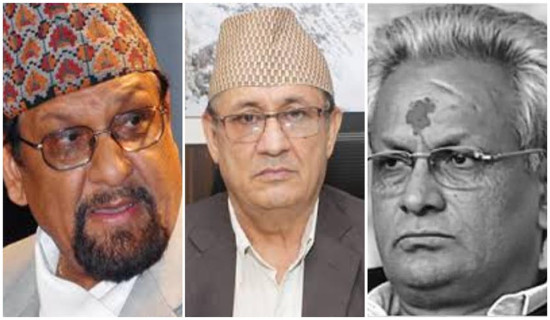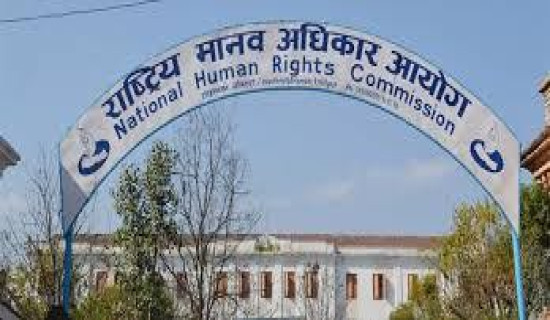- Monday, 8 December 2025
Muktinath Temple overwhelmed with surge of visitors
BY HARI KRISHNA SHARMA
Muktinath, Oct. 26: The Muktinath Temple, a sacred pilgrimage site for Hindus and Buddhists, witnessed an overwhelming crowd of devotees from early Saturday morning. Following the conclusion of the Tihar festival, many travelers heading toward Mustang stopped at the temple to pay homage.
According to Pramesh Gurung, treasurer of the Muktinath Development Committee and Chairman of Ward No. 1 of Baragung Muktikshetra Rural Municipality, more than 5,000 devotees visited the temple on Saturday morning alone.
Gurung said, “After Tihar, the number of devotees has increased significantly. People have been standing in line for hours to offer prayers, and managing the crowd has become quite challenging.” He added that the majority of visitors on Saturday were Nepali Hindu devotees.
The Muktinath Temple, a major attraction for domestic tourists visiting Lower and Upper Mustang, was expected to welcome more than 10,000 devotees throughout the day. The District Police Office informed that over 2,000 people visited the temple on Friday, indicating a threefold increase on Saturday. Heavy traffic was also observed along the Jomsom-Kagbeni-Muktinath road section, with a high number of motorcycles and vehicles heading toward the temple.
Crowds were seen from Ranipauwa, the main gateway to Muktinath. Volunteers, committee members, and Nepal Police personnel jointly managed the crowd and assisted devotees in performing rituals. It is widely believed that offering prayers and bathing in the temple’s 108 sacred water spouts and ponds fulfill one’s wishes and grant spiritual liberation. In recent years, improved infrastructure has made pilgrimages to the temple more convenient.
Muktinath, located at an altitude of 3,610 metres above sea level, is also known as the ‘Mukti Kshetra’ or ‘Place of Salvation.’ According to Hindu scriptures, Lord Brahma once performed a sacred Yagya here to attain salvation. Buddhist tradition holds that a monk from Tibet brought water from Mount Kailash and created the 108 water spouts at Muktinath.
Security in the temple area has been tightened with the installation of streetlights and CCTV cameras to prevent theft and ensure safety. A high-altitude medical centre staffed with health workers, volunteers, and security personnel is also available to assist visitors affected by altitude sickness.
Every year, an estimated 800,000 pilgrims and tourists from Nepal, India, and other countries visit Muktinath Temple. Statistics show that Indian pilgrims make up the second-largest group after Nepalis. Many devotees perform rituals for deceased ancestors at Kagbeni before entering the temple. Authorities continue to expand infrastructure and facilities to make the pilgrimage more comfortable for all visitors.
However, Upper Mustang has seen a noticeable drop in foreign tourist arrivals following the recent Gen Z movement. Reports of property damage, escaped prisoners, and security concerns led many international travellers to cancel trips scheduled for September.
Lomanthang Rural Municipality Chairman Tasi Nhurbu Gurung said that around 150 foreign bookings were cancelled. “Compared to last year, far fewer foreign tourists visited, as the unrest made Nepal appear unsafe,” he said.
Despite this, domestic tourism helped sustain local businesses. During the Dashain-Tihar holiday, local tourists traveling to Korala and other areas kept small and large hotels operational. From mid-April to October, 2,467 tourists visited Upper Mustang, primarily from Italy, France, Germany, and the U.S. The region’s cultural heritage, ancient settlements, monasteries, and traditional lifestyle remain strong attractions. Tourism authorities continue to encourage travel while maintaining safety measures and clear signage for visitors.

